Affiliate links on Android Authority may earn us a commission. Learn more.
Google Play Store vs the Apple App Store: by the numbers (2015)
Published onApril 20, 2015
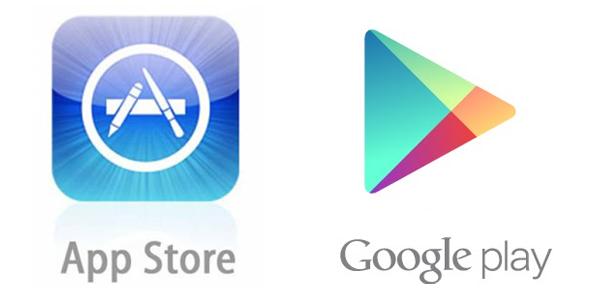
Both Google Play and iTunes offer apps, music, books, films, and TV series. But which is better? Here is a look at the two stores to see how they compare.
So with both stores offering at least 1 million apps and both notching-up downloads measured in the billions, what other deciding factors are there that distinguish one store from the other.
The common statistics which are used to compare the two stores are number of available apps, and total numbers of downloads. Apple has often used these statistics during its keynote speeches. Apple opened its App Store in 2008 at the time of the iPhone 3G launch. It started out with just 500 apps but within 3 months it had seen 100 million downloads and the number of apps jumped to 3000. By 2009 Apple hit the 2 billion download mark, by 2010 3 billion, and by 2011 10 billion with a total of 350,000 apps. By March 2012, the total number of downloads hit 25 billion across 550,000 apps (of which 170,000 were native iPad apps). A year later Apple hit the 50 billion download mark, and 85 billion towards the end of 2014. As for apps, it passed the 1 million app mark at the end of 2013, and Apple currently has around 1.4 million iOS apps available for download. However that number has been contested and some analysts say that the figure is closer to 1.2 million.
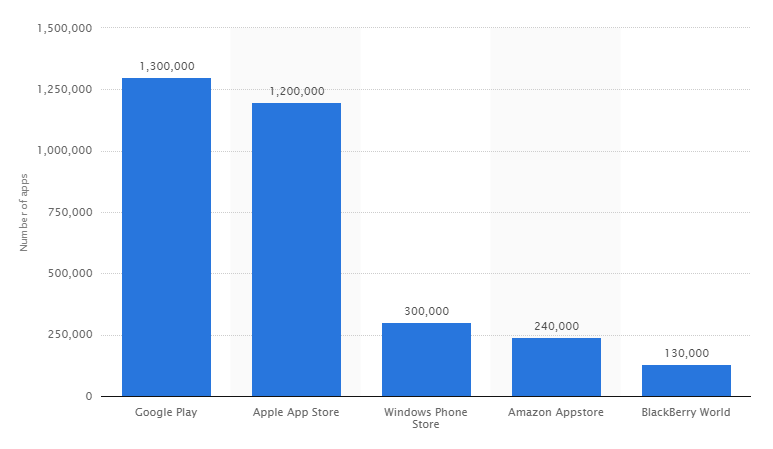
Google launched the Android Market in 2008 with only a handful of apps. But it quickly grew. By 2009 it contained some 2300 apps and by the summer of 2010 there were 80000 apps available, and the total number of downloads had surpassed the coveted 1 billion mark. However it was still a long way behind Apple’s App Store. During 2011 Google hit three major targets, 3 billion total downloads, then 6 billion total downloads and then 10 billion total downloads. This trend continued into 2012 where the number of apps surpassed 500,000 for the first time and the total number of downloads reached 25 billion.
Read also: 5 features the Google Play Store should steal from the iOS App Store right now
The Android Market was re-branded as Google Play on March 6, 2012, as it was merged with Google Music, and Google eBookstore. Google’s store managed to surpass Apple’s, in terms of the number of apps available, towards the end of 2014. As for 2015, the Wall Street Journal has reported that Google Play had 70% more app downloads than Apple’s App Store in the first quarter of 2015, but Apple’s app revenue was about 70% higher than on Google Play. The WSJ report is based on numbers from the App Annie Index: Market Q1 2015. The WSJ goes on to say that, “Google Play had 70% more app downloads than Apple, bolstered by demand in emerging markets such as Mexico, Turkey, Brazil and Indonesia. By comparison, Google’s lead in the third quarter last year was 60%.”
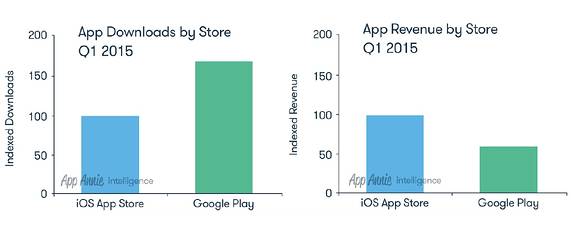
So with both stores offering at least 1 million apps and both notching-up downloads measured in the billions, what other deciding factors are there that distinguish one store from the other.
Developers
Apple’s App Store continues to generate more revenue than Google’s Play Store for developers. The reasons behind this are interesting. The biggest is probably that Apple owners come from higher income families. The handsets are expensive and these more affluent owners are prepared to spend more money on apps than the “average” Android user.
Another thing for potential developers to consider is that if you want to write an iOS app then you need a Mac, whereas Android apps can be written on Windows, OS X and Linux.
Of course, the Android ecosystem has its fair share of expensive phones, just look at the Samsung Galaxy S6 Edge. But there are also lots of Android owners whose handsets only cost between $100 and $300. Also in many parts of the world where Android is popular the average user may not have a credit/debut card and carrier billing isn’t always available.
This lack of direct sales revenue has resulted in more ad-supported apps on Android. In fact, the perception that Android doesn’t generate as much money in sales or in-app purchases may mean that many developers just go straight for ad-support apps on Android without even trying to monetize their apps in other ways. As a result it skews the statistics and perpetuates the idea that Android apps only make money via adverts.
This seems to be backed-up by statistics from AppBrain. According to its free vs paid Android apps page, only 196,000 of the total 1.4 billion apps are pay-for apps, the rest, some 1.2 billion are all free. Some of those free apps offer in-app purchases, but not many. Again according to AppBrain, the current number of Android apps with in-app billing is just under 110,000.
Another thing for potential developers to consider is that if you want to write an iOS app then you need a Mac, whereas Android apps can be written on Windows, OS X and Linux.
Web Interface
One very annoying aspect about the Apple App Store is that you need to use iTunes. In a web-centric, cloud-centric world it is quite jarring that I need to download and install a proprietary client on my PC to access iTunes. If you search for an iOS app on the web you will get a web page showing the app, but the only way forward from there is to view the app details in iTunes. If you are looking for apps on a iOS device then things are a bit better as you can search, download and install without needing to use the iTunes client on Windows or OS X.
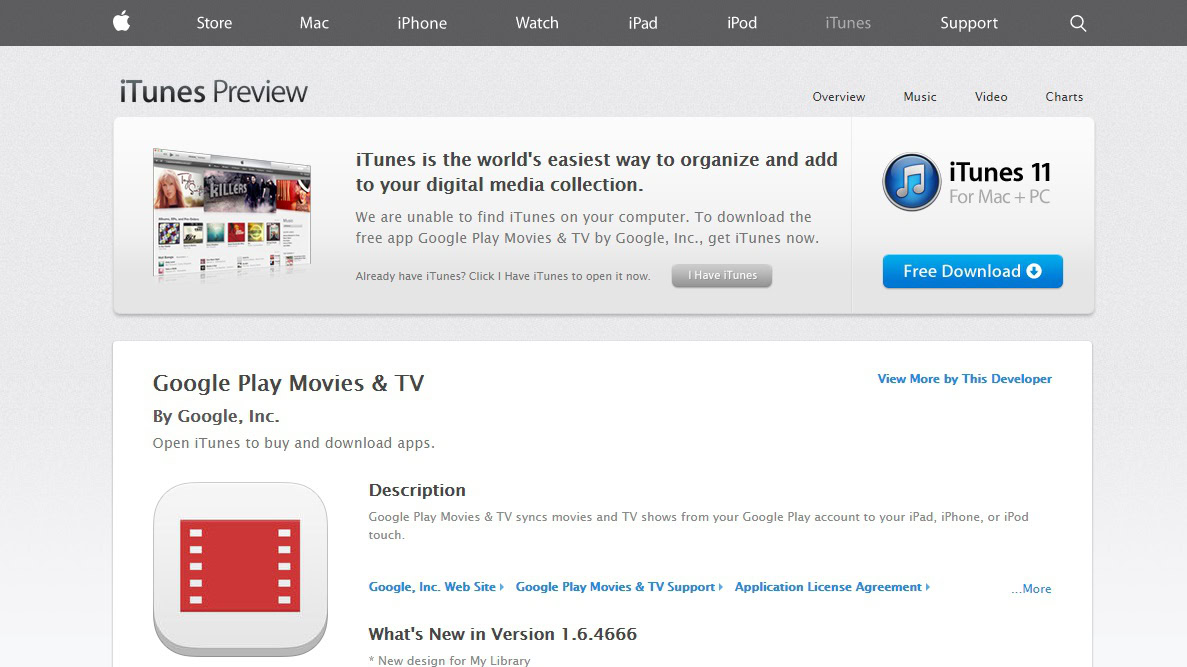
Google Play is different, while it does have a native app on Android, when you use it on Windows or OS X it relies on a pure web interface. From here you can push install requests to your devices and as well as purchase apps. This makes the Play Store much more flexible than iTunes.
Media
Whatever ecosystem you are using there is one thing for sure, you are investing money in apps, movies, music and books, and in doing so you become tied to that ecosystem. Neither Apple or Google let you buy movies or eBooks that are DRM free. Howeer, you can get DRM free music.
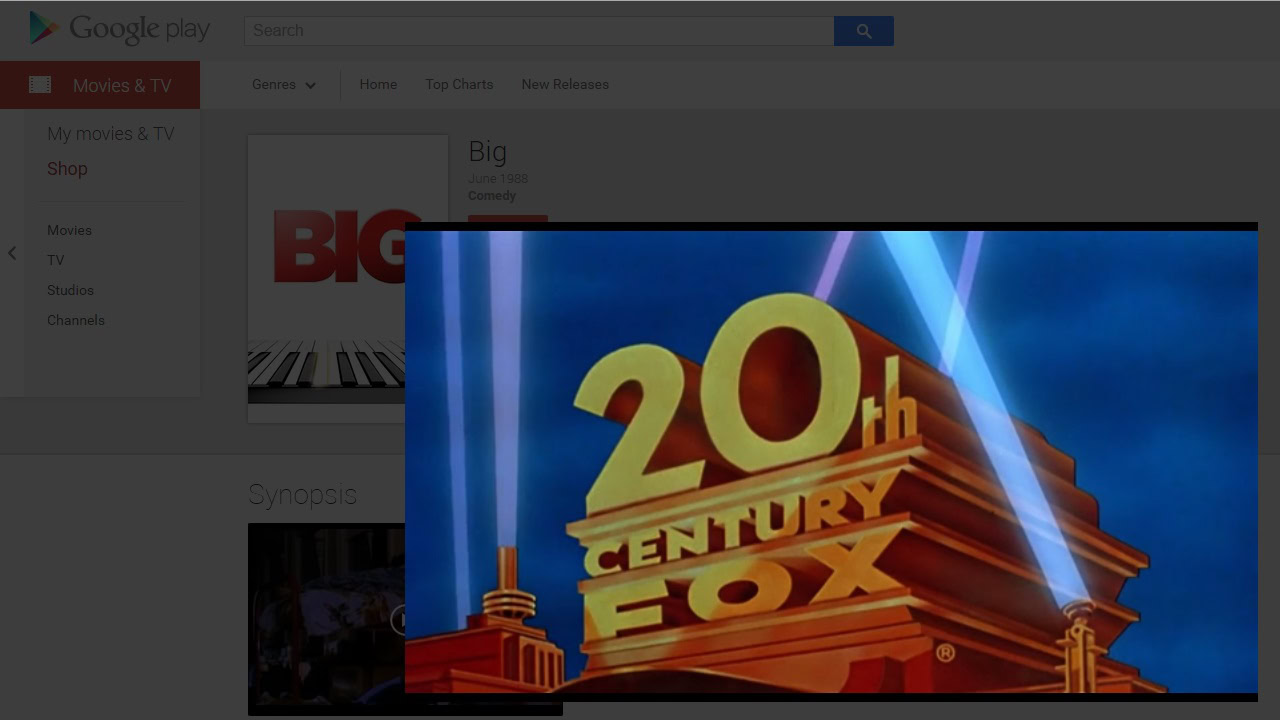
If you buy movies on iTunes you can only watch them on an Apple device or on a PC using iTunes. If you want to switch from iOS to Android then you can’t take your movies with you. The same isn’t true of Google. Google offers its Google Play Movies & TV app on iOS as well as its eBook reader app. You can also watch purchased movies on any device that has a supported web browser including on Chrome OS. That means that if you do buy media from Google Play at least you have the option to use that media on just about any device you want.
What do you think, which is the better store?